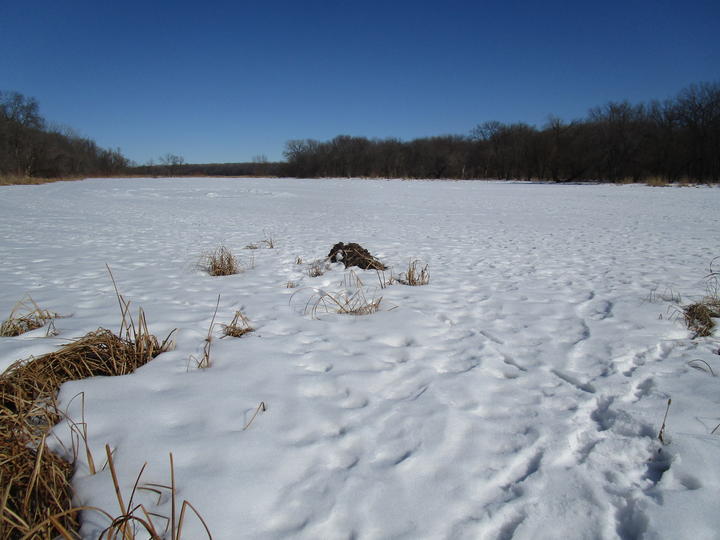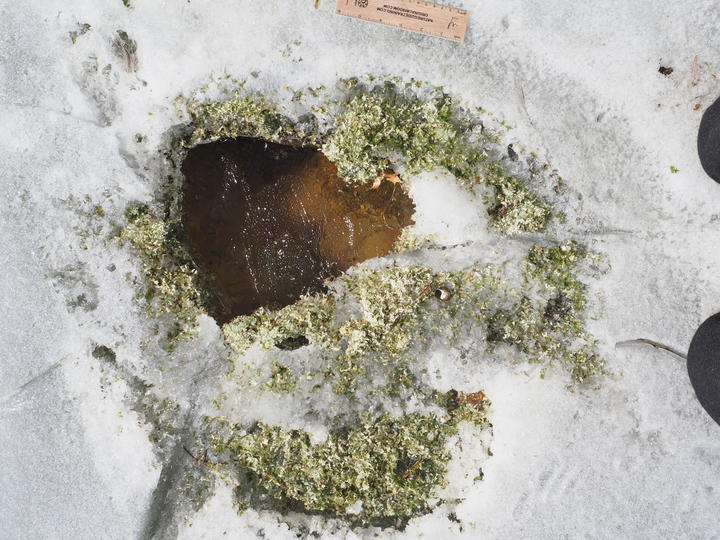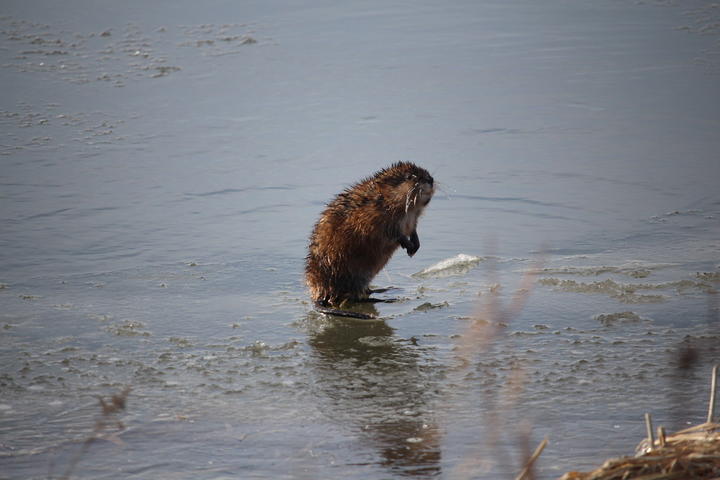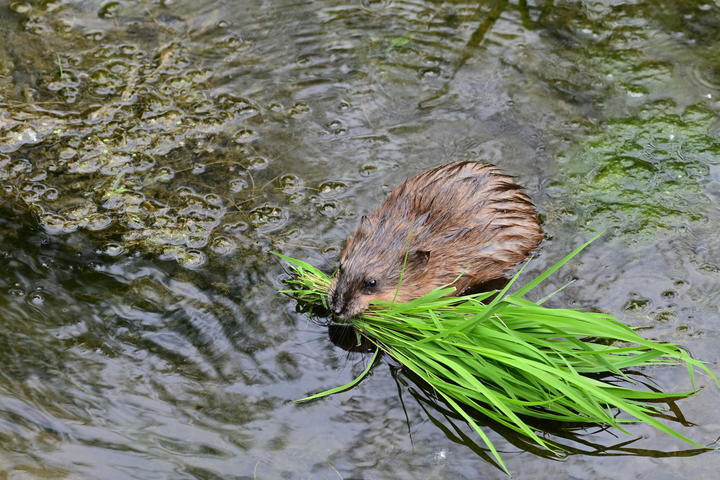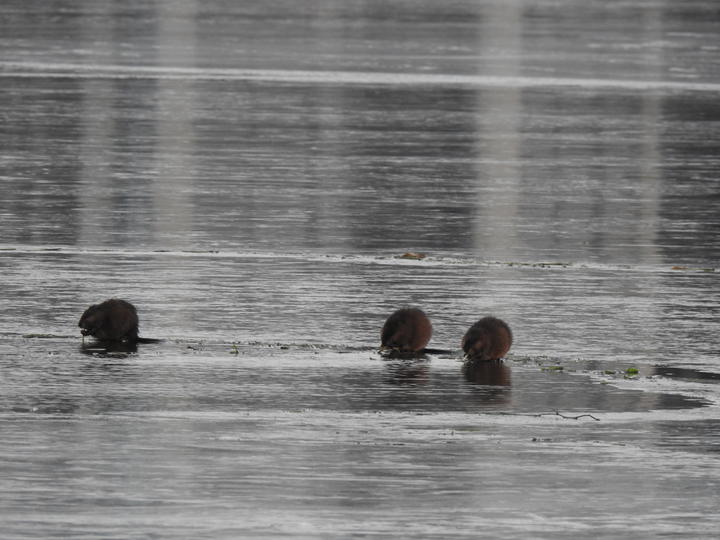More names for this animal
Anishinaabemowin: Wazhashk
Dakota: Siŋkpe
The Dakota and Anishinaabe were among the earliest people to name Minnesota’s plants and animals, as well as to understand them in relation to Minnesota’s climate and seasons. Those original names are still in use, and several are included on the Season Watch website.
Latin (or scientific name): Ondatra zibethicus
The scientific community has a convention of assigning agreed-upon Latin names to every kind of organism. Using scientific names helps people communicate confidently about the same organism and organize lifeforms based on how closely related they are.
Page contents
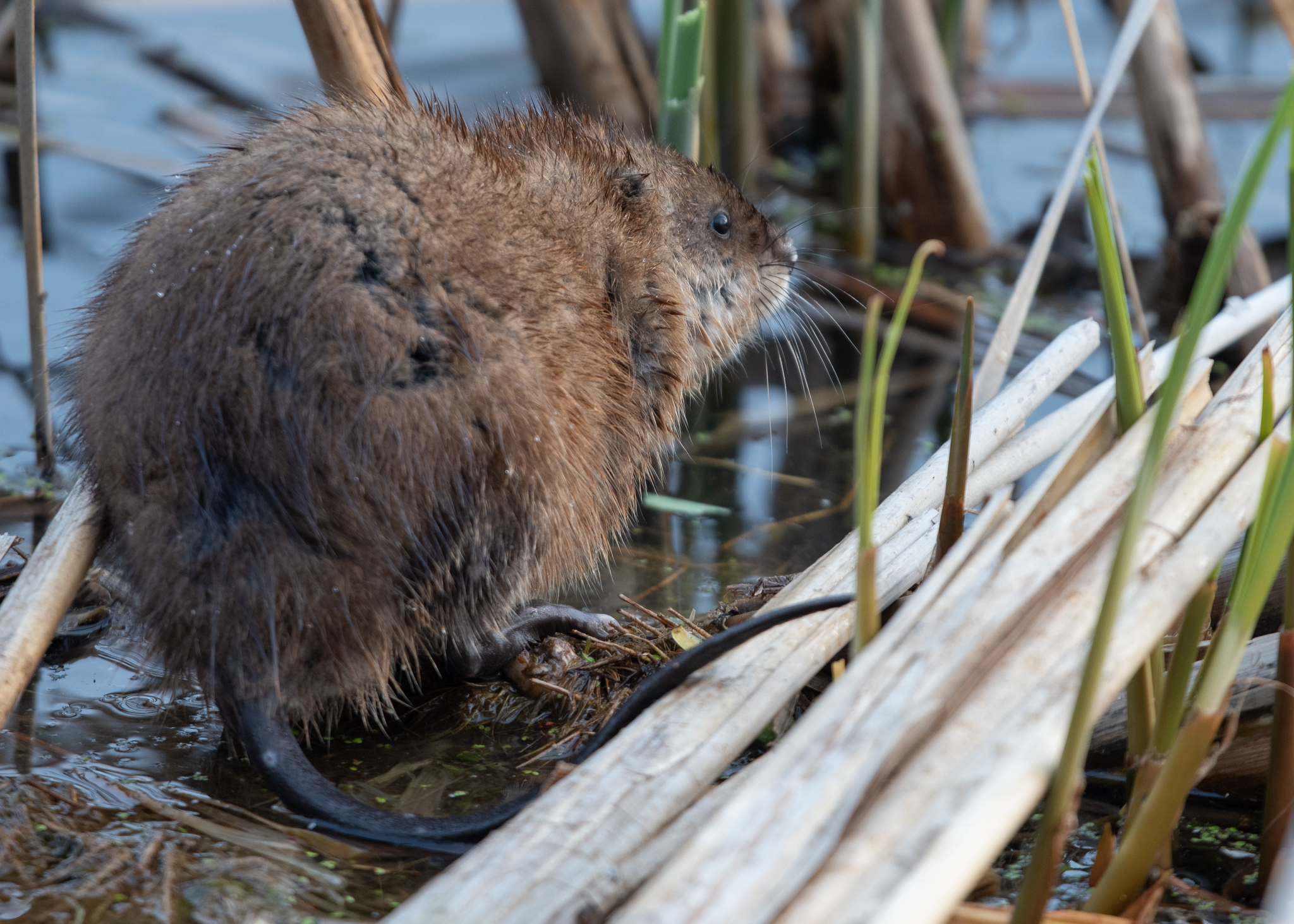
May 9, 2019, Washington County, Minnesota
Photo © Sara Simma, some rights reserved (CC-BY-NC)
iNaturalist observation
About the muskrat
- The muskrat is a medium sized, reddish brown rodent.
- They grow up to twenty inches long and weight two to five pounds.
- Muskrats, being mainly herbivores, eat the roots, stems, leaves, and fruits of cattails, rice, rushes, and water lilies. However, they are also opportunistic, occasionally eating small invertebrates.
- These rodents build their homes on water throughout Minnesota, but they only build lodges on sufficiently deep bodies of water.
- Muskrats have litters two to three times a year. The young typically stay in the den for about one month before leaving to live on their own.
- Unlike many other rodents, muskrats do not store their food for winter. And unlike beavers, muskrats do not build dams.
Visual guide to phenology
Watch for muskrats' presence (or absence), abundance, and behaviors at different times of year.
Note to observers
This page explains general clues to watch and listen for when observing muskrat phenology. However, this page does not explain how to identify this animal or collect data in a standardized way.
- For help with identification, see the Minnesota DNR's webpages on mammals.
- For guidance on collecting data, see Nature’s Notebook.
More resources
Keep exploring Season Watch
Keep exploring Season Watch
Co-author: Lynsey Nass, Minnesota Master Naturalist
